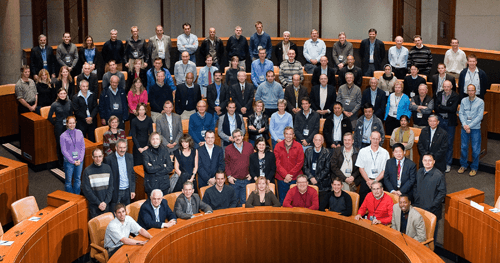DETECTION OF ENHANCEMENT OF OXYGEN TRANSPORT: SEVEN YEARS OF PROGRESS
Vancouver, BC, Canada. – October 2009
 “Detection of Enhancement of Oxygen Transport: Seven Years of Progress” was the topic for the 8th Annual USADA Symposium on Anti-Doping Science, hosted by the U.S. Anti-Doping Agency (USADA) October 2-5 in Vancouver, B.C.
“Detection of Enhancement of Oxygen Transport: Seven Years of Progress” was the topic for the 8th Annual USADA Symposium on Anti-Doping Science, hosted by the U.S. Anti-Doping Agency (USADA) October 2-5 in Vancouver, B.C.
The site of the upcoming 2010 Winter Games in February, Vancouver was an ideal backdrop for this preeminent event in the field of anti-doping science. Traveling from nearly 30 countries, more than 90 scientists, laboratory directors, and sports administrators representing renowned entities such as research institutes, international sport federations, universities, the United States Olympic & Paralympic Committee, the World Anti-Doping Agency, the International Paralympic Committee, professional sports leagues, and both the Vancouver and London Olympic Organizing Committees participated in this event.
This dynamic and interactive annual symposium enables scientists and experts from both in and out of the anti-doping community to share their expertise, and generate vital dialogue and illumination around the present issues facing the anti-doping movement as well as into the future.
“The goal of this year’s symposium was to familiarize anti-doping organizations with the latest advances in testing with particular emphasis on how to implement those advances in the field,” said Larry D. Bowers, Ph.D., USADA Chief Science Officer. “We’ve seen tremendous progress in the detection of substances and methods used to improve oxygen transport over the past several years, but we must be vigilant in staying ahead of potential new methods and agents. By bringing together the greatest minds in the scientific community to explore and discuss these issues, we continue to stimulate more and greater advances in deterring doping.”
Esteemed speakers included such experts as Prof. Christiane Ayotte of the INRS – Institut Armand-Frappier; Dr. H. Franklin Bunn of Harvard Medical School; Prof. Dr. Med. Wolfgang Jelkmann of the Institute of Physiology, University of Luebeck, Germany; Dr. Mark J. Koury from Vanderbilt University; Dr. Neil Robinson of the Laboratoire Suisse d’Analyse du Dopage; and Dr. Michael N. Sawka of the U.S. Army Research Institute of Environmental Medicine.
Held annually, the USADA Symposium on Anti-Doping Science is designed to enable the medical and science communities to gather and discuss the science behind doping with the potential for developing a uniform testing scheme, a research agenda and timeline, and to make the science and legal aspects of testing more efficient. Previous USADA symposia focused on “Mitochondria to Proteins: New Challenges for Anti-Doping Science” (2008); “Oxygen Transport and Energy Production” (2007); “Intra-Individual Reference Ranges” (2006); “Muscle Development & Recovery: Implications for Doping Control” (2005); “Detection of Human Growth Hormone Abuse in Sport” (2004); “Application of Gas Chromatography – Combustion – Isotope Ratio Mass Spectrometry to Doping Control” (2003); and “Oxygen Transport Enhancing Agents and Methods” (2002).
Learn more about the annual USADA Science Symposium.



